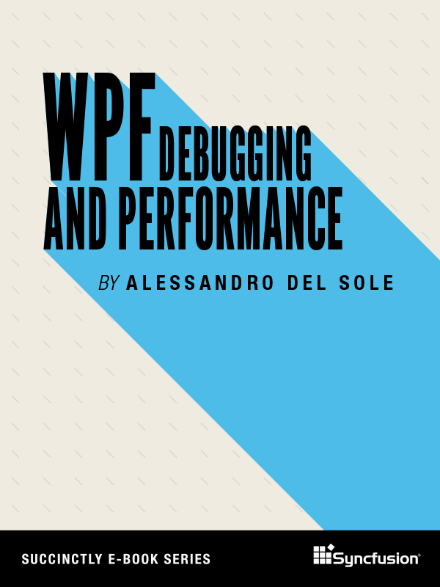

Alessandro del Sole’s new e-book, WPF Debugging and Performance Succinctly was released on Monday, July 31. Below is a short interview with this Succinctly about his new book and it’s subject. You can download the e-book here.


I was an early adopter of WPF and I started with this technology back in 2006 with its very first release. It was in a time when Visual Studio tools for WPF were still offered as an external extension and design-time tools where very basic. I remember the first book I wrote about WPF in Italian was published in 2007; I really loved this technology from the very beginning.
I think authors learn something new every time they write an article or book. In this case, the book was written while Visual Studio 2017 was being released and therefore I had the chance to learn new debugging features in the new version of the integrated development environment, such as my favorite feature, called Run-to-Click.
Microsoft is still investing in evolving WPF so, in my opinion, new versions of Visual Studio will offer even more powerful debugging tools. These will probably not be specific to WPF, as I imagine more cross-platform development in the future, but productivity will certainly be the main focus.
For the last six or seven years, WPF has been the technology of choice for building Windows desktop applications with .NET. The adoption of WPF around the world has not been very fast, but personally I see many companies making new investments in WPF and maintaining existing WPF solutions and this makes sense, since Windows desktop development is still extremely important. Debugging is a fundamental part of software development, and this book is the perfect companion for developers working on WPF on small, medium, and enterprise projects.
I can recommend a few books from the Succinctly series: WPF Succinctly, C# Succinctly, and Visual Studio 2017 Succinctly.